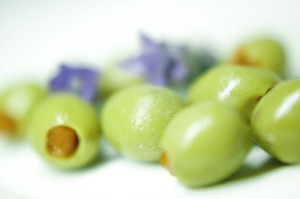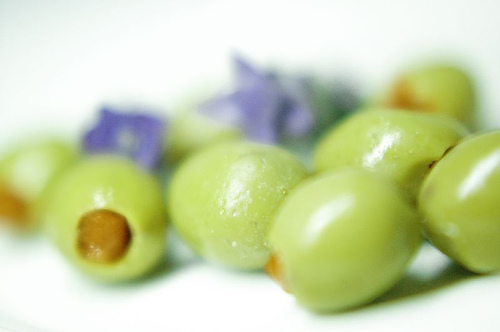Short Answer:
Yes, olives are Paleo!

What Are Olives?
Olive is a major agricultural fruit in the Mediterranean region. It belongs to the fruit group of drupes which have a pit at their core and surrounded by a large fleshy portion called pericarp. It is the source of the famous and healthy olive oil. Most people think of olives as vegetables rather than fruits.
Olives are small in size (usually grape-sized) and round in shape. They are typically green in color. Some olives turn black in color when ripe. Some olives are picked unripe while some are allowed to be fully ripened on the tree.
Olives are normally added to pasta, pizza and salad as ingredient. They can be made as tapenade to be used as dip, sandwich spread or toppings.
Classification of Olives
Olives are classified into 3 groups depending on the degree of ripeness. The first one is green olives which are picked from the tree before ripening and obtaining its full size. They are normally green to yellowish in color and have a bitter flavor.
Next are the semi-ripe or turning colour olives which are green to multi-shades of red to brown color. They are picked at the beginning of the ripening cycle. The skin of the olives is the only ones that turn color.
Last are the black or ripe olives. From the name itself, black olives are brown to black in color and are picked from the tree once reached full maturity.
3 Common Types of Olive Curing
Green olives are naturally bitter because of its phytonutrients and cured or treated to reduce its bitterness. The most common treatments used for olives are water curing, brine curing and lye curing. These affect the color and composition of olives. Cured olives become salty and less bitter.
- Water curing – this process involves the submersion of olives in water for a span of weeks. Olives that undergo this treatment keeps the slightly bitter taste and removes less oleuropein.
- Brine curing – The process involves submersion of olives in a concentrated salt solution. This can take up to several months and olives oftentimes undergo fermentation during the brine-curing process. The taste and composition of olives are changed during this process.
- Lye-curing – it involves the submersion of olives in an alkali solutions that contain either sodium or potassium hydroxide. Lye curing process involves a couple of steps including bathing the outer parts of olives with lye solution, draining, soaking to the next solution and oxygenating of solution to darken the color of the olives. In this process, it may take up to 5 solutions to complete the curing. Lye-cured olives are not recommended in the Paleo diet because of the ferrous gluconate (caustic soda) content.
Health Benefits of Olives
Like its oil version, olives offer a lot of health benefits and some of them are listed below:
- Olives are loaded with vitamin E, antioxidants, polyphenols and flavanoids that play a number of role in preventing diseases including heart disease, stroke, DNA damage and cancer.
- Hydroxytyrosol is a phytonutrient in olives that adis in preventing cancer and osteoporosis
- Oleuropein is a compound only found in olives that decreases the oxidation of bad cholesterol
- Olives contain monounsaturated fats which are essential in reducing blood pressure and risk of cardiovascular disease and inflammation
- Olives are good source of iron and dietary fiber which can be helpful in the proper function of immune system and healthy digestive tract
- Olives are rich in vitamin A. One cup of black olives contain ten percent of the daily recommended allowance of vitamin A which is crucial for eye health. Vitamin A is effective against cataracts, macular degeneration, glaucoma and other age-related ocular diseases
- Aside from vitamin A, E, polyphenols and antioxidants in olives, they also contain significant amounts of minerals such as calcium, copper, manganese and zinc.
What Experts Say About Olives… Is It Paleo?
“Olives are packed with iron and copper, and they’re a Primal friendly source of dietary fiber. They’re also rich in vitamin E – a noted antioxidant – and anti-inflammatory polyphenols and flavonoids. – Mark Sisson
All you ever wanted to know about Olives and Paleo
Mark’s Daily Apple. Smart fuel: Olives
http://www.marksdailyapple.com/olives-difference-green-black/#axzz3fSA7Xgbx
The Paleo List. Are Olives Paleo?
http://thepaleolist.com/2014/03/07/are-olives-paleo/
Paleolista. Are Olives Paleo?
http://www.paleoista.com/food-and-drink/are-olives-paleo/
The World’s Healthiest Foods. Olives
http://www.whfoods.com/genpage.php/genpage.php?tname=foodspice&dbid=46
Nutrition and You. Olive nutrition facts
http://www.nutrition-and-you.com/olives.html
Did we miss anything?
Comment below and let us know what you think. Do you agree with our conclusion?
photo credit: Olives n Lavender on White

